October is a great month to plant spring-blooming perennials. A gardener once said that October offers a “second chance” at spring. While you might be busy with tasks like raking fallen leaves, it’s also an ideal time to plant perennials that will make your garden stand out come springtime!
When planting in October, it’s important to keep an eye on the weather. Avoid planting too close to the first frost, as frost can damage your plants and may signal the beginning of frozen ground in certain regions. Frozen soil can prevent plants from absorbing water, which will hinder their growth when spring arrives.
If you’re eager to keep planting into the fall, you’re in the right place. We’ve curated a list of our favorite perennials that can still be planted in October. Ready to learn more? Let’s get started!
Table of Contents
ToggleAllium
- Plant Size: 1-6 feet (depending on species)
- Sun Exposure: Full sun
- Bloom Time: Spring
- Hardiness Zones: 4-10
Alliums, which were recommended for September planting, can also be planted in October. Their striking flowers are a favorite in spring gardens. While many know the popular ‘Globemaster’ variety, there are numerous other types worth trying.
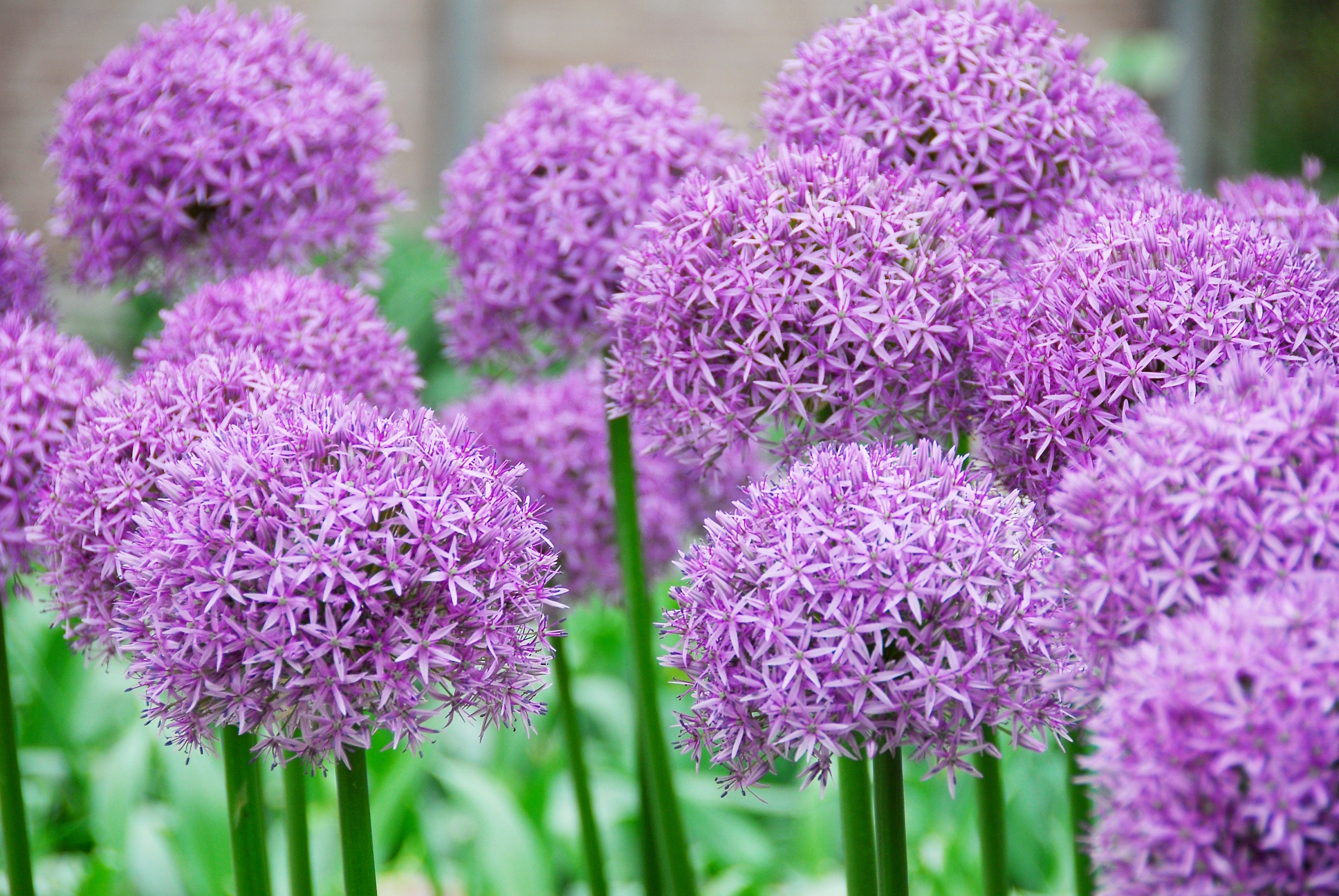
One option is the ‘drumstick’ allium, which features smaller, reddish-purple flowers. Another fascinating variety is ‘Schubertii,’ which has a unique sea anemone-like appearance. These perennials make a bold statement in any garden and are also resistant to pests.
Allium spreads easily, making it a budget-friendly choice for those who want to stretch their gardening dollars.
Astilbe
- Plant Size: 1-2 feet tall
- Sun Exposure: Partial sun
- Bloom Time: Spring to summer
- Hardiness Zones: 3-8
Astilbe is one of the few floriferous plants that thrives in shady garden areas. It comes in a range of colors and its delicate, fern-like foliage adds a beautiful texture to any garden space.

Some astilbe varieties produce tighter blooms, while others have a looser, more natural look. You can plant astilbe among hostas for a splash of color, or use them as borders along pathways. Astilbe is low-maintenance, requiring minimal care once established.
Autumn Fern
- Plant Size: 2 feet
- Sun Exposure: Full to partial shade
- Bloom Time: N/A
- Hardiness Zones: 5-9
For gardeners looking to add depth to their landscape, ferns are a great choice. Autumn ferns are sturdy, hardy, and don’t spread as aggressively as some other ferns.
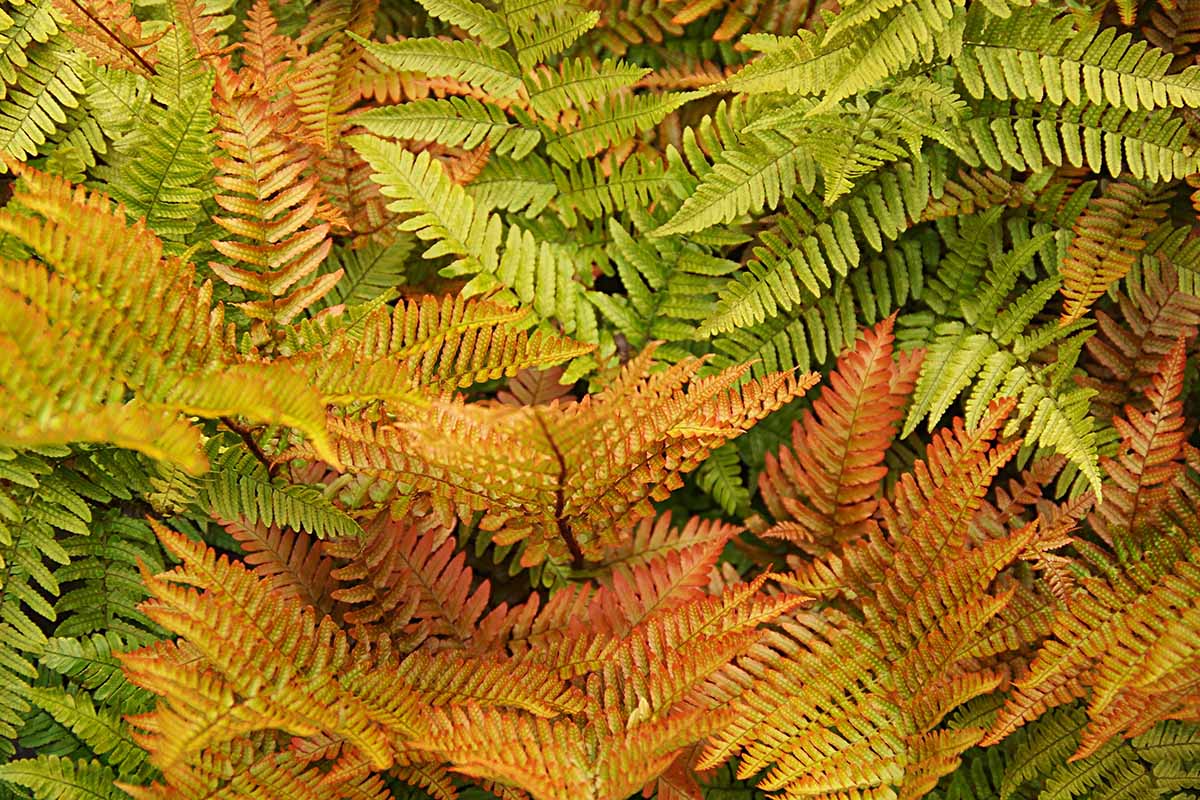
Their moderate height makes them ideal for shade gardens, where they can serve as a backdrop to shorter perennials or annuals. They also work well at the edge of a woodland area. In spring, autumn fern fronds emerge copper-colored, giving them their name, before maturing into the deep green typical of ferns.
Coral Bells (Heuchera)
- Plant Size: 1-2 feet
- Sun Exposure: Full to partial sun
- Bloom Time: Summer
- Hardiness Zones: 4-9
Coral bells are another versatile perennial. Whether you’re planting them in containers, using them as a border, or filling gaps between other plants, coral bells add beauty to any garden.
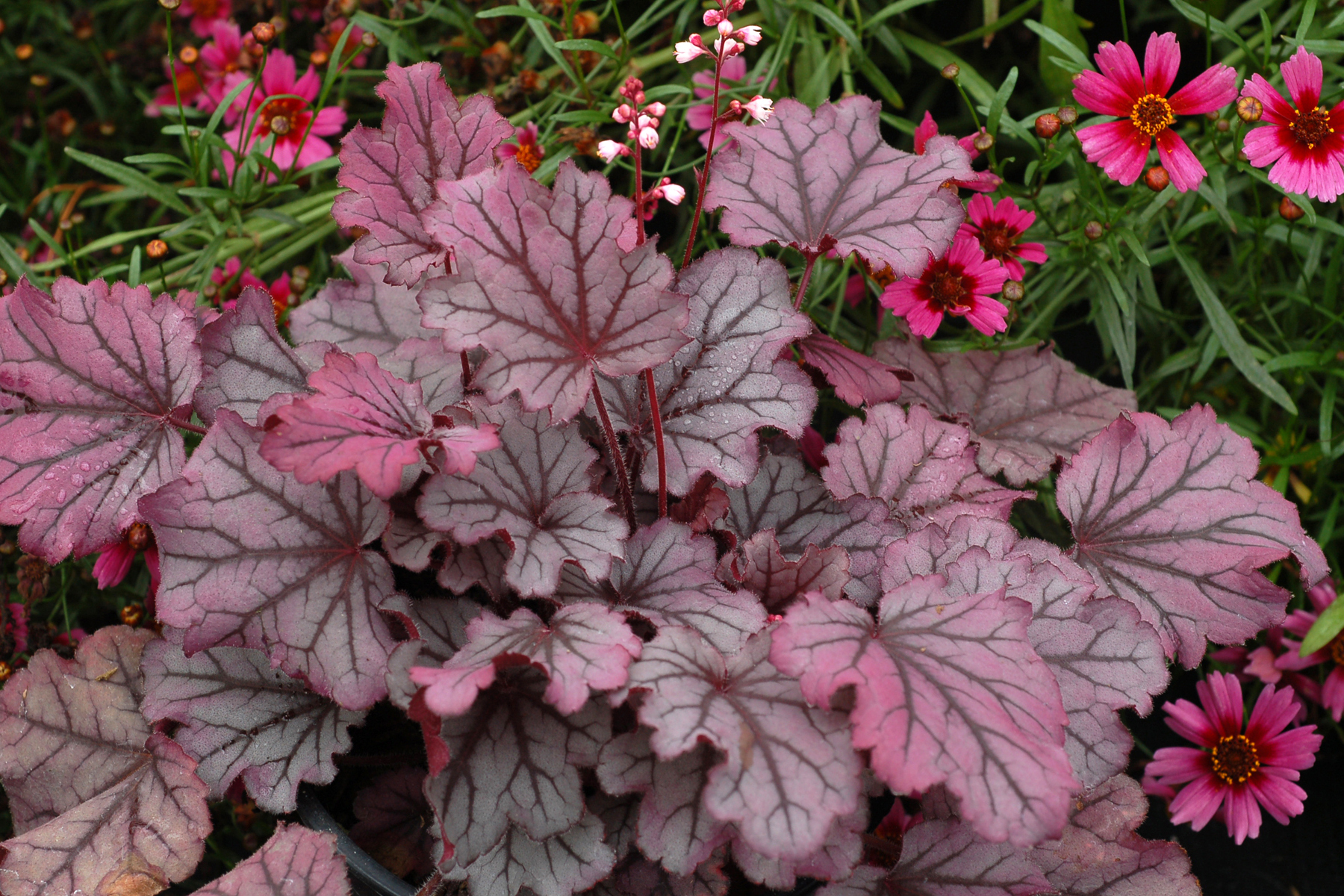
The foliage ranges from green to red to deep purple, with many unique variations in between. One of my favorites, ‘Green Spice,’ has vibrant red veining that enhances the look of my partial shade garden.
Crocus
- Plant Size: 6 inches tall
- Sun Exposure: Full to partial sun
- Bloom Time: Late winter to early spring, and fall
- Hardiness Zones: 3-8
Crocus flowers are often the first to signal the arrival of spring, sometimes even peeking through the last snow. These bulbs come in various shades of purple, blue, white, and yellow, and you can plant a mix of colors or focus on one shade.
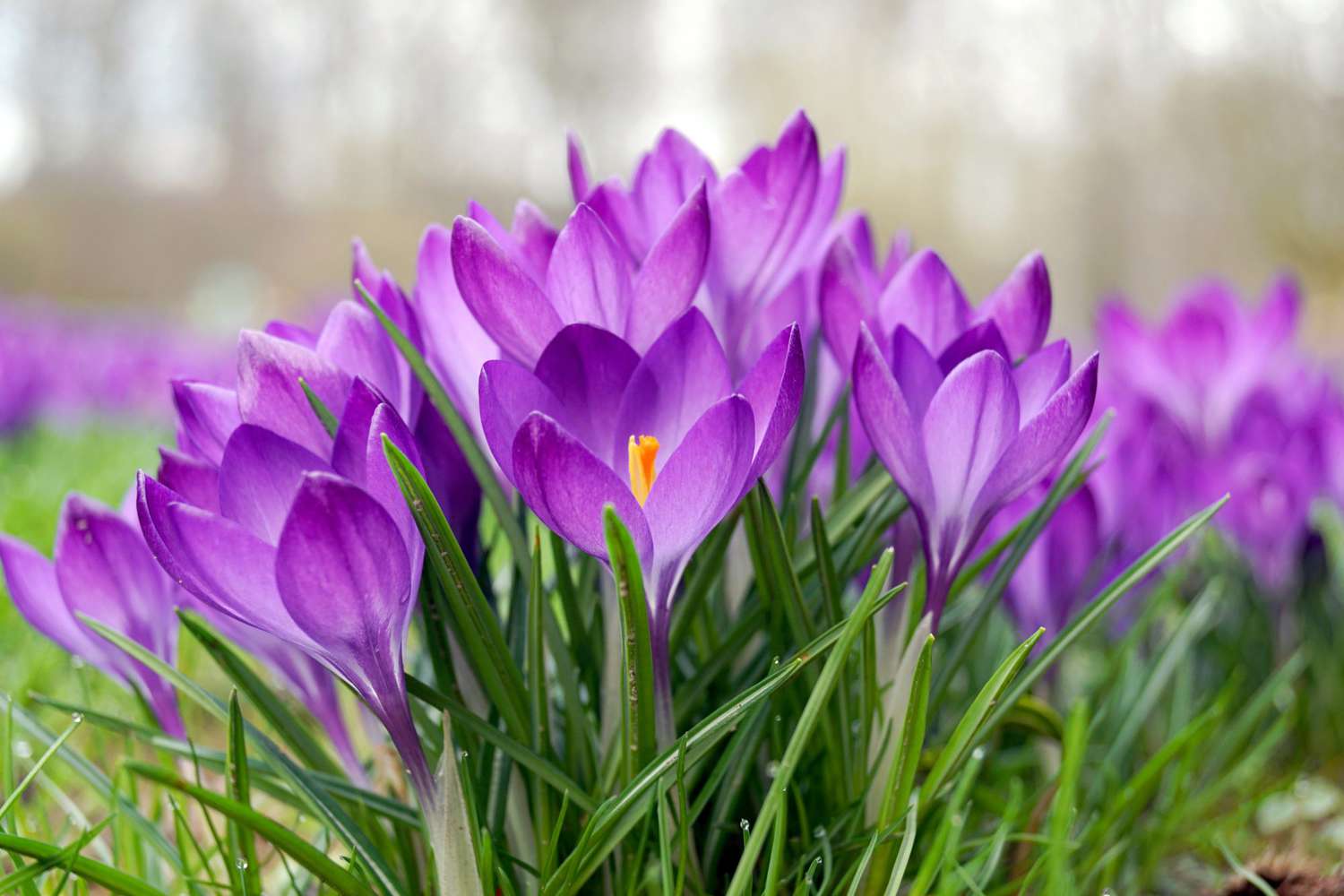
There are also autumn-blooming crocuses. To plant them, follow the package directions, as crocuses come in different sizes, including the larger “giant crocus.” Be sure to plant crocus bulbs along with your other spring bulbs, once the soil has cooled but before it freezes.
Daffodil
- Plant Size: 6-30 inches
- Sun Exposure: Full to partial sun
- Bloom Time: Early spring
- Hardiness Zones: 4-8
Daffodils are a timeless spring perennial. These bulbs have been cultivated to produce some of the most stunning blooms, found not only in the traditional yellow and white but also in peach tones.

You can find daffodils in combinations of these colors or as double-flowered varieties. Planting a large group of daffodils is an easy way to ensure a vibrant spring garden. Simply plant your daffodil bulbs six inches deep and wait for their cheerful arrival in spring.
Forsythia
- Plant Size: 2-10 feet tall (depending on species)
- Sun Exposure: Full to partial sun
- Bloom Time: Spring
- Hardiness Zones: 5-8
Forsythia is a hardy, easy-to-grow shrub that thrives in various conditions. Plant forsythia shrubs in the fall and water them until the ground freezes. In spring, you’ll be greeted by cascading branches filled with bright yellow flowers.
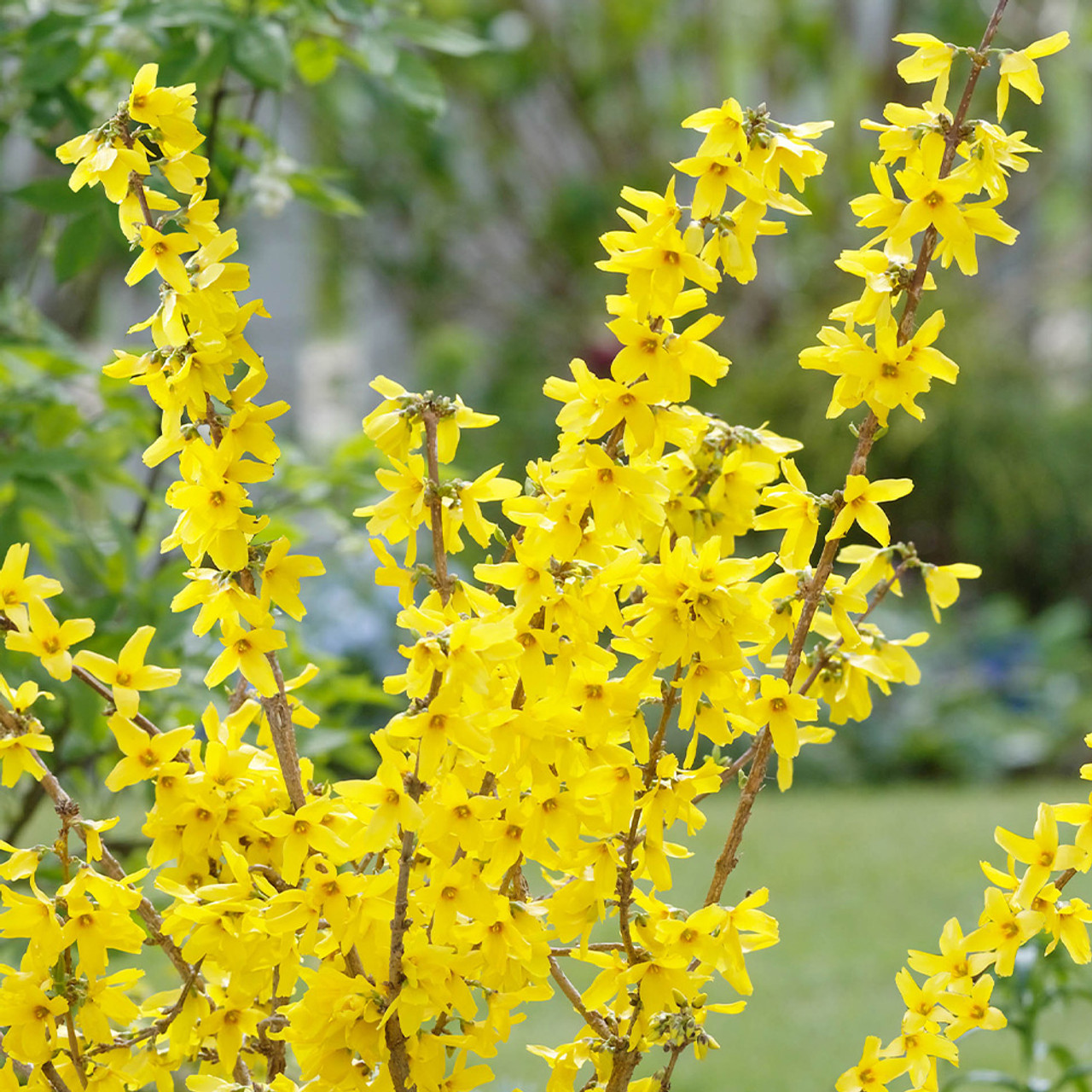
After the blooms fade, the shrub remains dense with leaves, making it a perfect option for a privacy hedge. Check the plant tag for mature size to ensure you have enough space for the shrub. You can either leave forsythia to grow in its natural, wild shape or prune it for a tidier appearance.
Foxtail Lily
- Plant Size: 3-6 feet tall
- Sun Exposure: Full sun
- Bloom Time: Late spring to early summer
- Hardiness Zones: 5-8
Foxtail lilies (Eremurus) are tall, whimsical flowers that are easy to grow. Their blooms resemble those of liatris but are much taller. Typically orange or yellow, you can also find a few pink varieties.
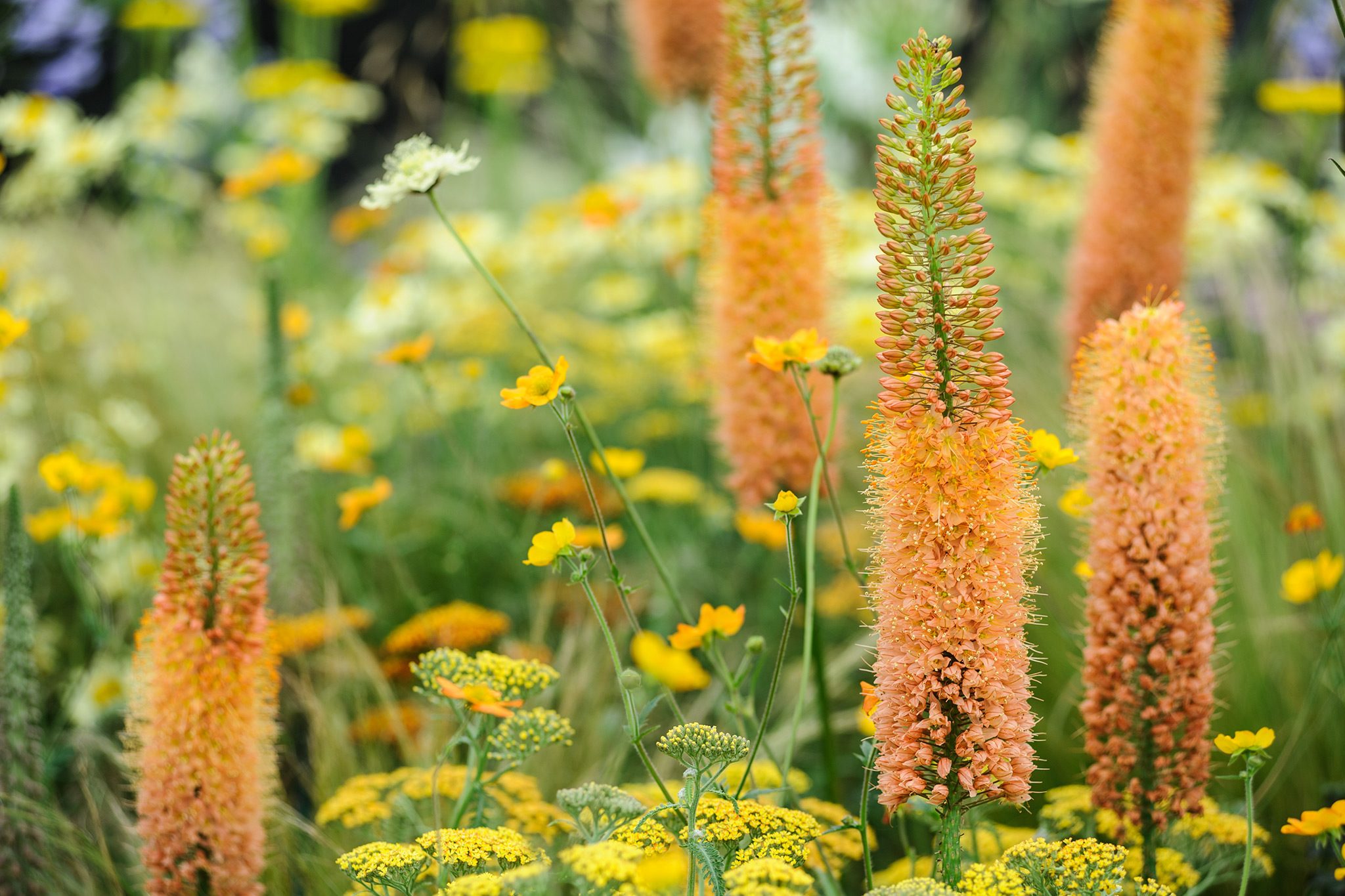
Plant these bulbs in the fall and enjoy their towering flowers in spring. Since the foliage fades before the blooms, place foxtail lilies in the back of the garden, surrounded by other perennials or shrubs. Be sure to give them plenty of space and avoid clustering them too closely together.
Hydrangea
- Plant Size: 2-15 feet tall (depending on variety)
- Sun Exposure: Partial to full sun
- Bloom Time: Summer
- Hardiness Zones: 3-7
Fall is an excellent time to plant hydrangeas, but make sure to plant them early enough to establish roots before winter. Hydrangeas need adequate watering to survive the cold months.
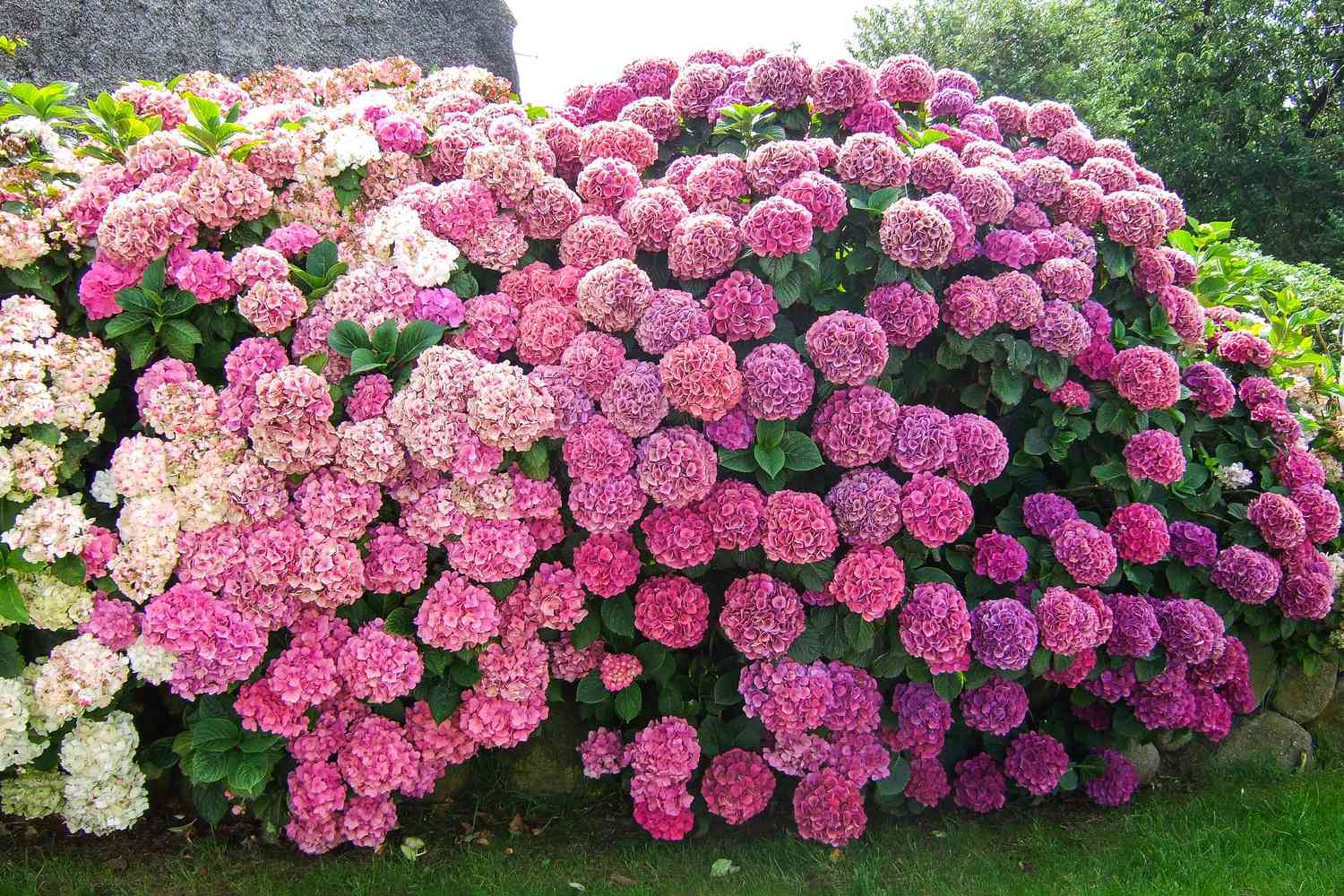
There are six main types of hydrangeas, most of which prefer partial sun. However, panicle hydrangeas thrive in full sun. Plant hydrangeas as borders, hedges, or even in containers to add beauty to your garden.
Muscari (Grape Hyacinth)
- Plant Size: 6-9 inches tall
- Sun Exposure: Full sun to partial shade
- Bloom Time: Early spring
- Hardiness Zones: 4-8
Muscari, also known as grape hyacinth, is a charming spring bulb that deserves a spot in your garden. Its small flower clusters resemble bunches of grapes, giving the plant its nickname. Muscari blooms in white, blue, and purple hues.
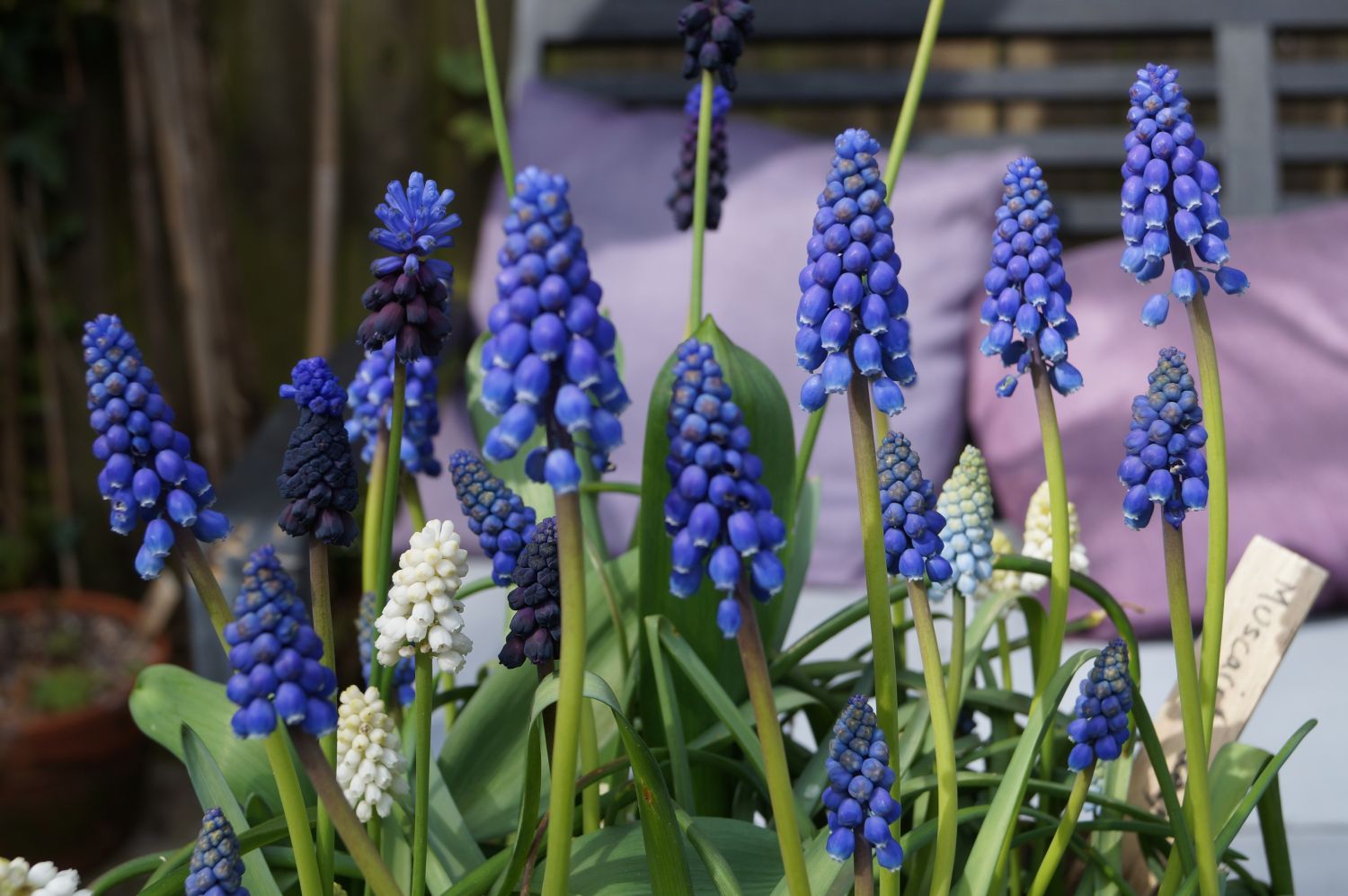
When planting, space the bulbs three inches apart and plant them three inches deep. Muscari is an excellent choice for planting alongside other spring bulbs or as a front border in a perennial garden.
Oriental Lily
- Plant Size: 1-4 feet
- Sun Exposure: Full sun
- Bloom Time: Summer
- Hardiness Zones: 4-9
Oriental lilies are known for their stunning ‘Stargazer’ variety, famous for its fragrant white petals with bright pink accents. Dwarf oriental lilies grow up to one foot and are ideal as borders.
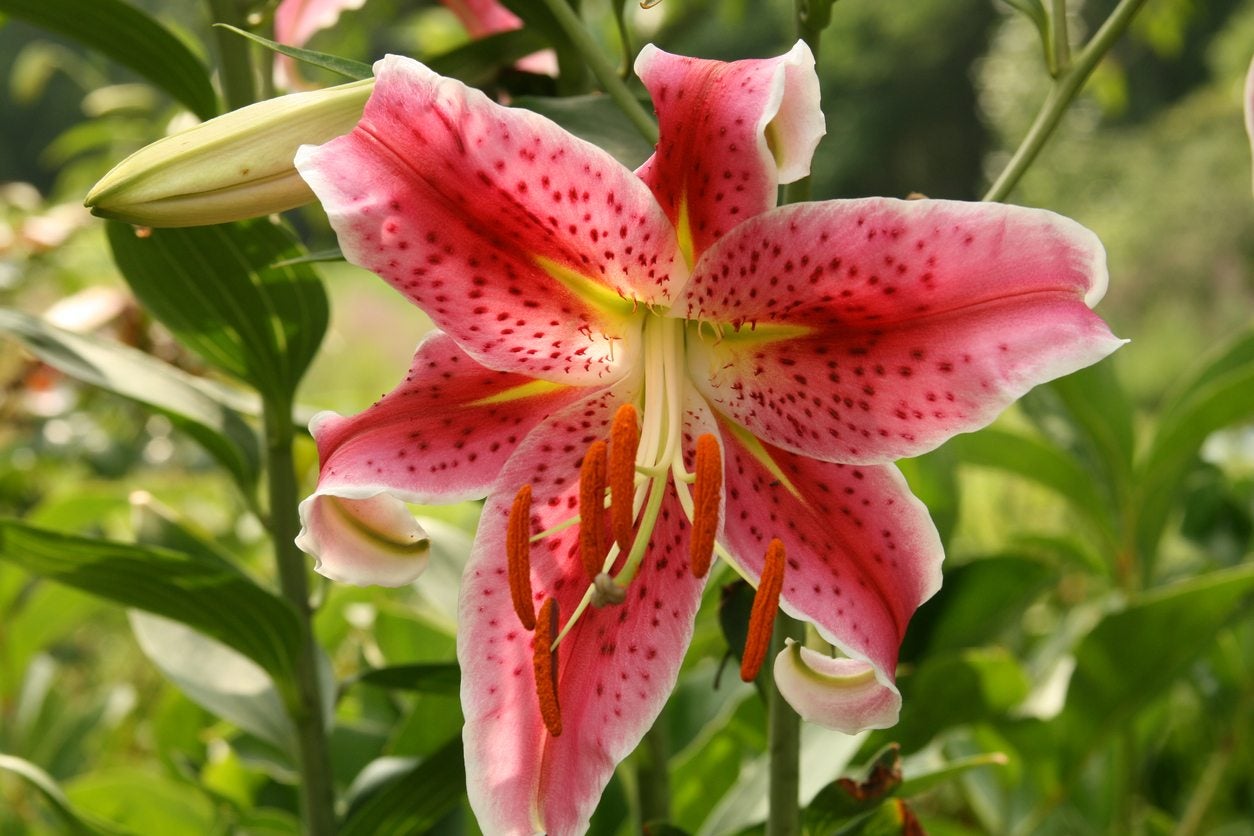
For a more dramatic effect, larger varieties can grow up to 4 feet. Plant your oriental lily bulbs one foot deep and aim for 3-4 bulbs per square foot. Group them in clusters for a striking visual impact.
Peony
- Plant Size: 2-3 feet
- Sun Exposure: Full to partial sun
- Bloom Time: Late spring to early summer
- Hardiness Zones: 3-8
Peonies are a beloved perennial with large, fragrant blooms available in various colors, though they’re most famous for their pink varieties.

This is an ideal time to plant peonies, allowing them to establish before the ground freezes. The heavy blossoms may require plant supports to prevent drooping. Peonies can be planted in a perennial or cutting garden, where they will add beauty year after year.
Tulip
- Plant Size: 9-24 inches tall (depending on variety)
- Sun Exposure: Full sun
- Bloom Time: Spring
- Hardiness Zones: 3-8
Tulips are another beloved spring flower, best planted in the fall. While tulips are generally perennials, some varieties are more reliable returners than others. Be sure to do some research when selecting your bulbs.

The sheer variety of tulips is astounding. They come in nearly every color and combination imaginable. Tulips can also feature single or double blooms, with different petal shapes to suit any garden style. Whether your garden is modern or classic, there’s a tulip for it—all they need is full sun!
Veronica (Spiked Speedwell)
- Plant Size: 1-3 feet tall (depending on variety)
- Sun Exposure: Full sun
- Bloom Time: Summer
- Hardiness Zones: 3-8
Veronica, also known as spiked speedwell, is an elegant perennial that adds charm to your summer garden. This plant produces spiked clusters of flowers in shades of purple, pink, and white.
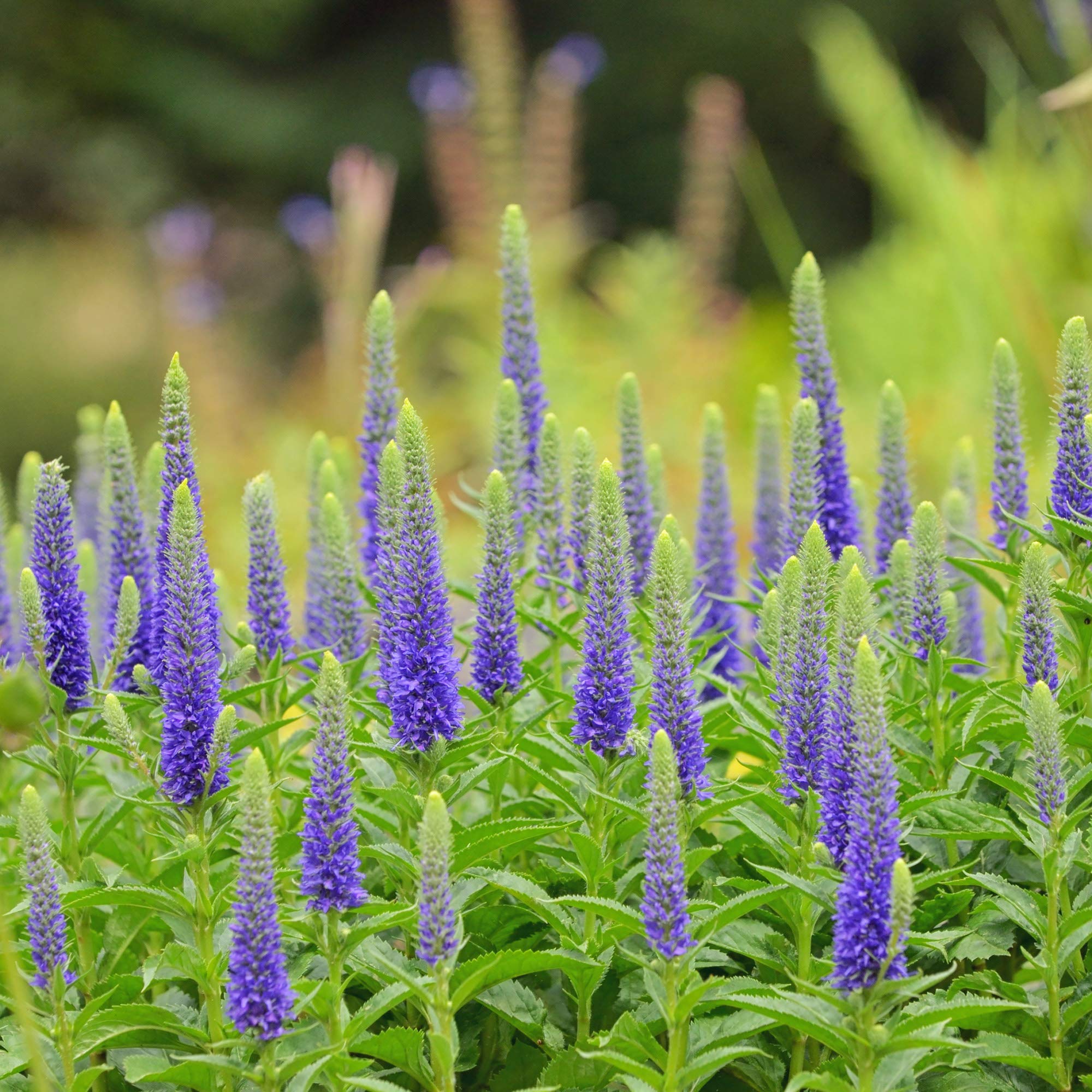
To extend the blooming period, deadhead the flowers as they fade. Depending on the variety you choose, Veronica can work as a border plant or fill in the middle of your garden, adding texture and color.
Wood Anemone
- Plant Size: 4-6 inches
- Sun Exposure: Full to partial shade
- Bloom Time: Early spring
- Hardiness Zones: 4-9
Wood anemones are a delightful addition to woodland gardens, especially if you enjoy the look of anemones. These small plants make a big impact with their bright white blooms in shady areas during springtime.

One great feature of wood anemones is that they naturalize, meaning they not only return each year but also spread, producing new bulbs and plants annually. This makes them an excellent choice for larger areas in need of ground cover.
Final Thoughts
Take advantage of October’s cooler temperatures to enjoy your garden. As you clean up fallen leaves and begin cutting back your perennials, don’t forget to plant a few more. Any of the perennials mentioned here would be a worthwhile addition, but remember, there are many other options you can plant in October as well. Follow your instincts and add what you love to your garden.
